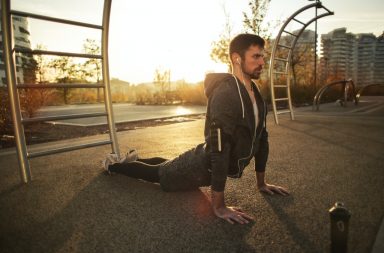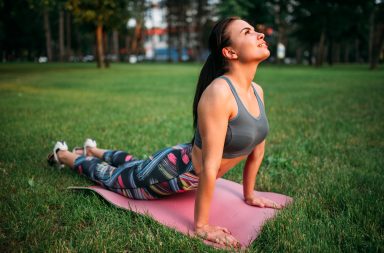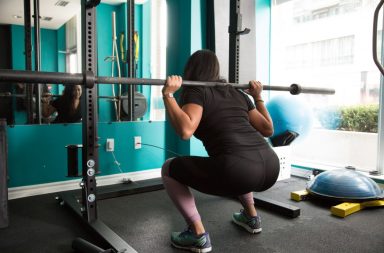Is Cycling Good for Hip Bursitis? Top Tips – From Hip Pain to Pedal Power
Some sports are synonymous with a particular injury; running and shin splints, skier’s thumb, or tennis elbow, for example. Even casual activities aren’t without their prime anatomical suspects. What’s a step up the kerb without a sprained ankle or two? Hip pain and exercise however, make for a slightly different pairing. Hip injuries readily crop up in disciplines across the board, from athletics, ballet and curling, to cycling, tennis and even wrestling. At which point, the question is perhaps not so much is cycling good for hip bursitis, but is it safe to walk, let alone get back on a bike?! The good news is that exercise can be great for hip health. The key lies in identifying the safest exercise for each stage of your condition.
Not sure where to begin? No problem. We’ll guide you through everything from hip function and pain, to top tips on the importance of bike fit and future injury prevention.
Is cycling good for hip pain? Let’s find out.
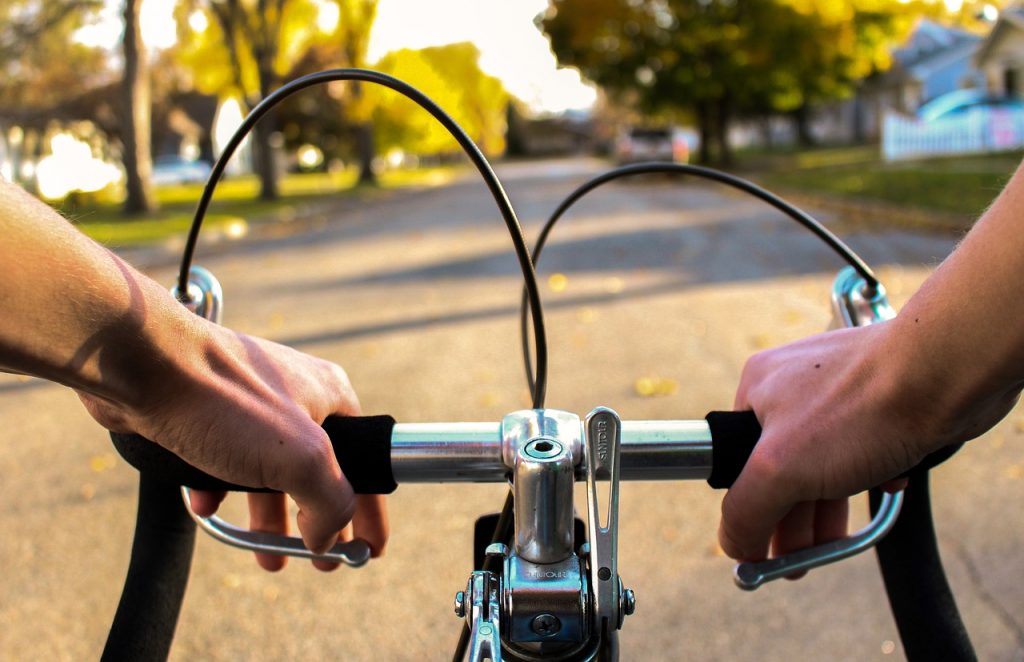
Anatomy and function – what do your hips do?
As one of the chief weight-bearing joints in the body, a healthy hip can withstand a phenomenal amount of force. This giant ball-and-socket joint provides the motion and mobility required for everyday activities like walking, running or climbing stairs. The surrounding ligaments, tendons and muscle structure meanwhile, help support and protect the stability and strength of the joint itself.
What can go wrong?
The potential for hip pain stems in part from its huge functional responsibility. Your hips are very rarely at rest. Even if you’re partial to lunging at the fridge rather than in the gym, your hips are still pivotal in getting you from A to B. Whether it’s sitting for your Acai bowl breakfast, or getting stuck into afternoon burpees, your hips are constantly working hard.
Why not try some Acai berry recipes, Yummy
As with any part of the body, the hip joints are susceptible to the effects of those everyday lifestyle activities. Chronic hip pain in adults is most commonly caused by osteoarthritis, while acute hip injuries often include fractures and dislocations. Conditions such as hip bursitis (or trochanteric bursitis) can also occur as a result of joint overuse, infection and trauma.
But what does this mean for engaging in sport?
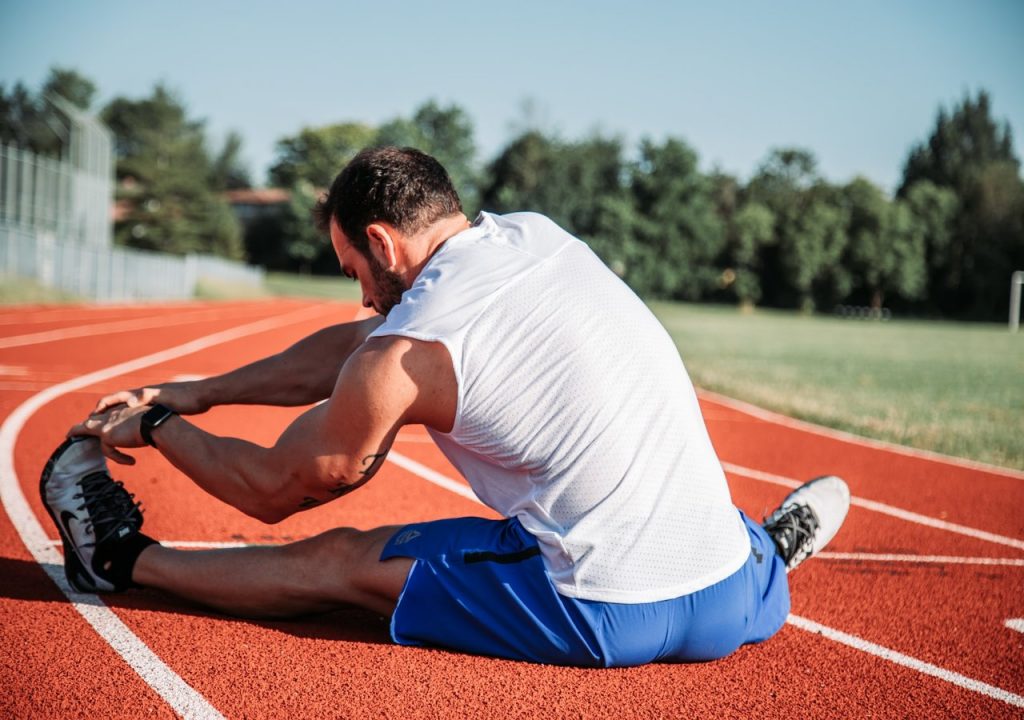
Photo credit: Alora Griffiths via Unsplash
Is exercise good for hip pain and hip health?
The answer is a resounding yes, it certainly can be!
Exercise can be very beneficial in helping to prevent hip pain.
We’re all aware that regular exercise can help reduce the risk of serious illness. We also know the importance of following a healthy diet to support our joints. But did you know that physical activity can also help prevent some of the most common causes of hip pain? That’s right. Regular exercise has been medically proven to lower your risk of osteoarthritis and hip fracture by up to a whopping 83% and 68%.
If your hips are healthy, low-impact exercise like cycling can be a great tool to help keep them that way.
If you’re struggling with an injury, you might find that your medical team also encourages exercise for hip pain management. An injury appropriate exercise programme can help reduce pain, increase mobility, and improve the strength of the hip’s supporting structures.

Photo Credit: Sole Bicycles via Unsplash
Can exercise cause hip pain?
As with all sports however, cycling also has its potential risks.
It actually takes a tremendous amount of force to injure healthy hips. Unfortunately, the repetitive, competitive and often high-speed and high-impact nature of sport can provide the perfect anatomical storm.
The wrong type, level and duration of physical activity can spell trouble for your joints. This is particularly true if you’re already carrying an injury or weakness. In this situation, it’s vital to consider the most appropriate form of exercise for your condition.
Which is the exact reason, in fact, that you’re reading this now!
In the same way that knee pain would lead you to seek out the best exercises for bad knees, hip discomfort is a sign that some TLC and activity modification might be required.
Looking for some great exercises for bad knees?
The question is, what exactly does this mean for cycling and hip bursitis?
We’re talking about the sport that boasts everything from Boris bikes and BMX, to 30 inch Olympian thighs, after all.
Are the advantages and pitfalls as varied as the sport itself?
Can cycling cause hip bursitis?
When it comes to cycling, injury to an otherwise healthy hip usually has one of three causes:
- Acute injury, such as a fall
- Overuse, or the repetitive or high impact nature of the activity
- The need for technique or equipment adjustment
(Unless of course you’re Robert Förstemann, whose near 30 inch thighs not only power toasters but generate enough force to snap a bike chain. But we’re not sure there’s a category for that)
Cycling and hip bursitis
If you’ve been diagnosed with hip bursitis, there’s a good chance you’re well-acquainted with at least one element from that list already. Unfortunately those same three suspects are also widely responsible for the onset of bursitis.
A healthy bursa serves to cushion and reduce the friction between a bone and its surrounding soft tissues. Irritation to the lining of this small fluid sac can cause excess fluid build-up. This, in turn, leads to the pain and inflammation known as bursitis.
Two of the most common causes of hip bursitis in cycling are:
- Direct trauma to the bursa
- Excessive friction and pressure of the overlying and surrounding soft tissues
However, while the risks and nature of cycling can contribute to hip bursitis, it doesn’t have to mean an end to your cycling days.
In fact, cycling could even help with your recovery.
When is cycling good for hip bursitis and pain?
The six week CHAIN programme study offers a great example of the potential benefits of cycling for hip pain. More specifically, it highlights the benefits of static cycling for the self-management of hip osteoarthritis. Over 78% of the study’s patients reported an improvement in physical function and a reduction in pain levels. Is cycling good for hip pain? The statistics are certainly in favour!
High-impact or potentially aggravating physical activities tend to be discouraged during flare-ups of bursitis. The aim of any treatment is to reduce and relieve pain and inflammation, while gently rehabilitating the surrounding soft tissues. As a first step back to cycling, a stationary exercise bike provides a gentle and low-impact return to the saddle.
Prevention however, is commonly said to be better than cure. With that in mind, we’re pleased to announce that it’s possible to minimise the risk of hip bursitis in cycling.

Hip bursitis, bike fit and hip pain prevention
It can be a challenge to completely eliminate all risk factors for hip bursitis in cycling. Accidents for example, can and do unfortunately happen, whether it be on a tandem or in the velodrome.
The good news is that it is possible to help prevent the excessive hip strain that can lead to hip bursitis.
The great news is that it only takes three simple steps:
Avoid overuse
If you’re a beginner to cycling, or indeed any sport, it’s important to start gradually. A twenty mile mountain ride might seem appealing but your body probably won’t thank you for it. The same holds true even for the more experienced rider. Excessive speed and distance, and too little time spent on rest and recovery, can cause all manner of pain to creep in. That TLC we mentioned earlier? This is a great time to use a foam roller.
Check the bike fit
Your hips are a huge driving force in the pedalling process. To avoid injury, imbalance and overload, it’s important that your bike is of an optimum fit. This means setting the handlebars, seat and cleats (or pedals) to the best position for you. Making sure the seat is at the right height, for example, will prevent your body rocking back and forth to compensate. Similarly, the right fit from saddle to handlebars can help ensure a healthy posture. A good bike fit helps reduce the risk of the excessive stress and strains commonly seen in cycling and hip pain.
And last but not least…
Make a safe return to cycling
As with all health matters, it’s important to remember that no two people will experience a condition or injury in the exact same way. For this reason, your medical team is best placed to advise you on the safest time to begin cycling again.
However, when it comes to cycling and hip bursitis, the importance lies in not rushing back too early! Remember to warm up thoroughly, incorporate those all-important rest and recovery periods, and take a gradual approach back to the saddle.
We can’t promise you Quadzilla thighs but you’ll be on track to help reduce the risk of any further injury.
If you have any tips or thoughts you’d like to share, or perhaps some Olympian tales of your own, please let us know with a comment below.
